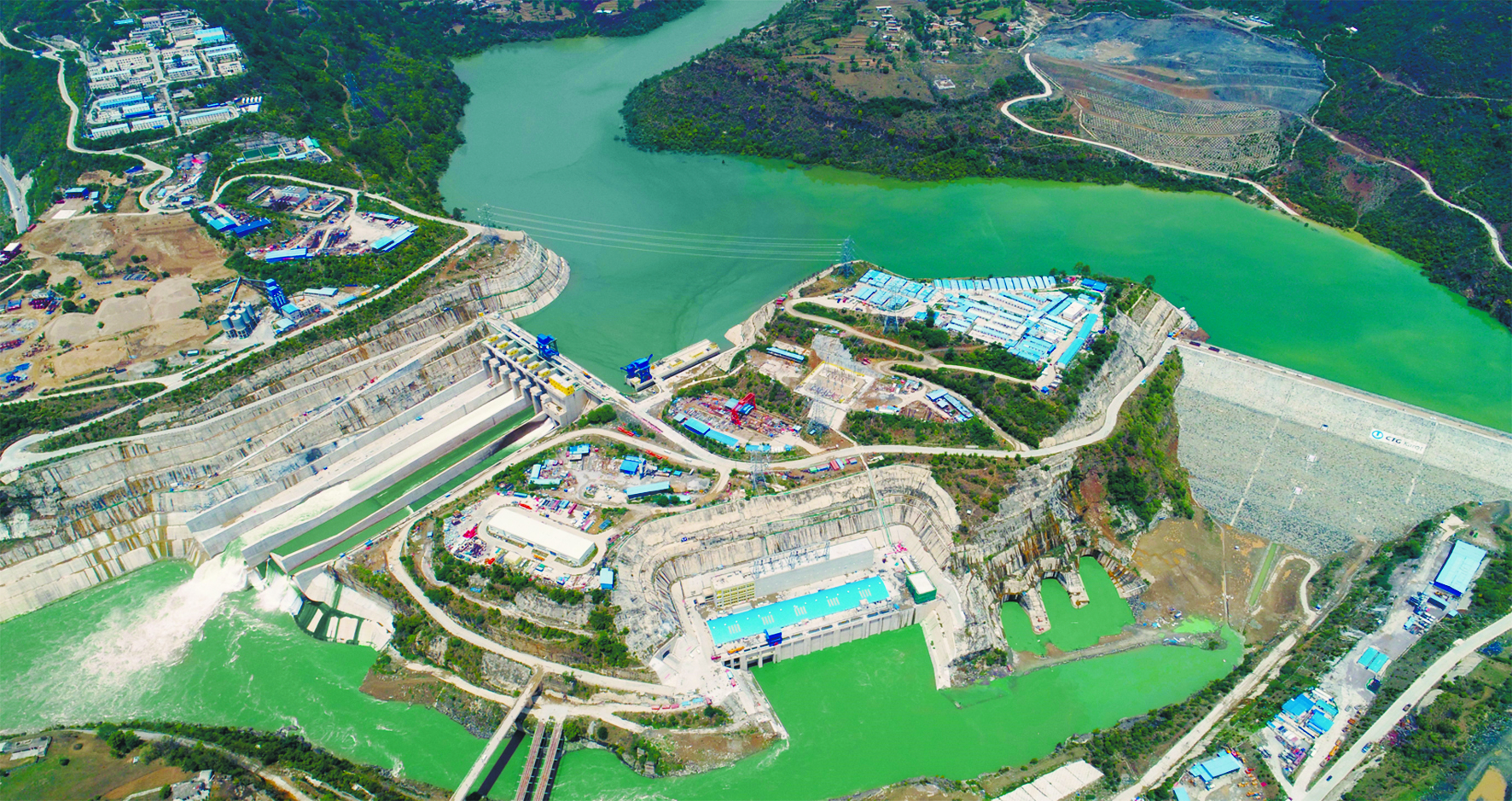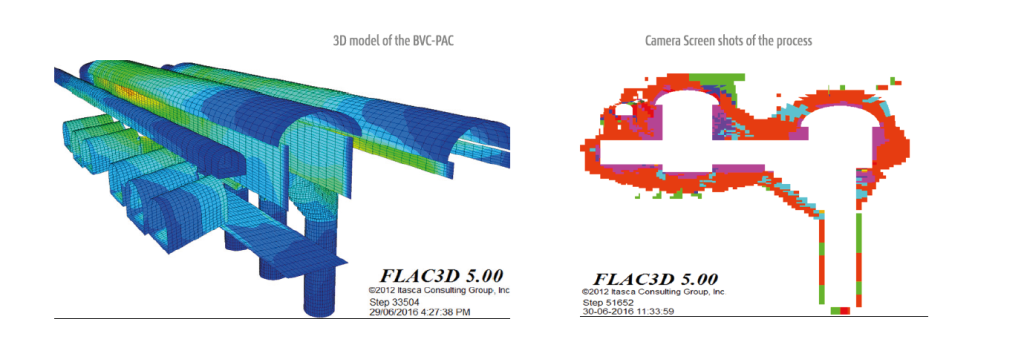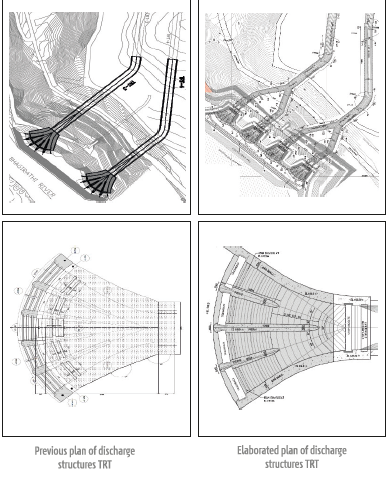International experience21.12.2022
SMEC - leading the path in hydropower & pumped storage projects in South and Central Asia

SMEC: At SMEC, we partner with clients and organisations to provide cost-effective, practical and sustainable project outcomes.
SMEC, a member of Surbana Jurong Group, is a world-leading Hydropower engineering, management and development consultancy with a significant presence across Asia. SMEC has its origins in the iconic Snowy Mountains Hydroelectric Scheme, recognised as one of the civil engineering wonders of the modern world. The multipurpose project was undertaken between 1949 and 1974 and brought together over 100,000 workers from 30 countries.
SMEC’s journey in Asia began in 1968 with a hydropower project in Nepal that connected people in remote Himalayan areas with water and power. Since then, SMEC has grown a strong local presence in the region.
As per a recent study conducted by the World Bank, South Asia has witnessed a growth in energy demand over the past two decades, increasing by over 50 percent since 2000. In Bangladesh, Bhutan, India, Nepal and Sri Lanka in particular, electricity demand has grown on average by more than five percent annually over the past two decades and is expected to more than double by 2050. In Central Asia there are opportunities to unlock renewable energy resources and support the growing demand for energy. Across central Asia, countries are increasing cooperation with regards to regional energy programs.

SMEC currently employs over 2,000 people in Asia and approx. 10,000 people globally. Recent hydropower accomplishments in the region are outlined below.
1,000 MW Tehri Pumped Storage Project, India The 1,000 MW Tehri Pumped Storage Project (PSP) forms a part of the 2,400 MW Tehri Hydro Power Complex. Nearing completion, Tehri is one of the largest pumped storage projects in India. The Project is now listed under the ‘National Infrastructure Pipeline’, a first-of-its-kind, whole-of-government exercise to provide world-class infrastructure across India and improve the quality of life for all citizens.
3-D Analysis of Underground Caverns
All the components of the Tehri PSP are located underground, essentially inside one hill within the vicinity of the existing 1,000 MW Tehri Hydro Power Project. The upstream and downstream surge shaft chambers were proposed to be 20-25m wide. As can happen with such projects, as geological information became available, it was apparent that the geological environment was not suited to construct chambers this wide. Through extensive 3D analysis, including modelling rock bolting to replicate actual underground conditions, SMEC re-planned the chambers and a width of 15m was determined as the best solution. The analysis done was one of its kind carried out in the geotechnical industry and appreciated internationally.

Powerhouse FEM Model
The Powerhouse FEM Model in Tehri was carried out using MIDAS FEA software. The Dynamic behaviour of the foundation plays an important role in providing normal operating conditions for the supported turbine-generator.
In designing the turbine foundations the team took into account seismic forces as part of the lateral load calculations. The foundation should have sufficient bearing capacity to support the turbine, generator and its auxiliary equipment, whilst also being designed to limit the vibration amplitudes of the shaft, the rotor and the bearings
SMEC initiated physical model studies of the tail race tunnel (TRT) which found flaws in the design. Having inherited the design from a previous consultant, SMEC took up the challenge of proposing an alternative optimised solution.
Using detailed numerical modelling studies, SMEC proposed converting the two larger outlet structures into four smaller ones. This modified TRT configuration was confirmed through physical model studies, bringing critical parameters including exit velocities, submergence and equitable distribution of flows under control.
This approach enhanced safety whilst enabling the project to meet its deadlines and technical expectations, design
720 MW Karot Hydro power project, Pakistan
Powered by the Jhelum River, Karot Hydro power plant will generate 3.2 billion kilowatt-hours of electricity each year, meeting the energy demand of five million people. It will also reduce 3.5 million metric tons of carbon emissions annually and save around 1.4 million tons of standard coal equivalent each year. SMEC has worked on the project since its inception, initially undertaking feasibility studies for the site in 2009.
Karot Dam is the first Asphaltic Concrete Core Rockfill Dam in Pakistan and the first renewable energy project constructed under the China Pakistan Economic Corridor. SMEC has provided a world class team with detailed knowledge of international building standards for hydro power facilities. As part of the scope, SMEC also undertook detailed analysis of the proposed design. To reduce risk, SMEC made several amendments to the dam’s design and construction methodology. By providing ongoing training and mentoring to the client team and building contractors, SMEC has added value throughout the construction phase.
600 MW Kameng Hydro power Project, India
Kameng Hydropower Station commenced commercial operation in February 2021, becoming the largest power plant in the northeast region of India. Du ring the construction phase, SMEC undertook extensive layout optimisation to ensure the design was built in accordance with international best practice. Two dams (Bichom 69m and Tenga 25m in height) divert water from the Kameng River to a new powerhouse facility, through an 14.52 Km water conductor system.
Issues resolved during tunnelling
During tunnelling SMEC provided advice to accelerate the progress of the trans basin tunnel works. The trans basin tunnel faced hindrances due to high cover zones of 2km, squeezing conditions, high seepage in the tunnel and cavity formation in the crown of the tunnel.SMEC also carried out detailed design and engineering for the fragile slope cutupstream from the Powerhouse. The team devised a shear piling solution which enabled the weathered slope to withhold the necessary load. The method proposed by US Navy Manual, Soil mechanics (DM 7.01) was selected for the analysis of the proposed bored pile construction at respective elevations of the Powerhouse slope.
The project provides 13 percent of its generated power for free, supplying 72MW to the State and 6MW for local area development. The dam’s legacy delivers a clean reliable source of fuel, new skilled employment opportunities and improvement of rural road infrastructure.
The Cross-border electricity trade in the region has improved markedly in recent years. Asian Countries are increasingly coming together and committing to regional cooperation to diversify electricity supply resources, enabling a greater role for renewable energy resources. Across Asia SMEC is well positioned to support our clients in the transition towards a greener, sustainable, and resilient future.
Decarbonization and sustainable development to take center stage at the 11th Annual Downstream Central Asia & Caspian Conference
Renewable electricity share in Turkey nears 50%
Sinn Power plans groundbreaking floating photovoltaic system in Bavaria
Swiss researchers boost efficiency of vertical axis wind turbines
Rapid expansion of batteries will be crucial to meet climate and energy security goals set at COP28
Georgia acquires first floating solar power plant
Wind turbine blades get a sustainable upgrade
China restricts offshore solar PV projects to specific sea areas
Biden announces $7 billion for solar energy in low-income communities
Production of a solar energy storage battery has started in Vilnius
Ainur Sospanova: Clear rules are needed for functioning of bilateral contracts market
Process to submit applications for RES auctions to construct HPPs and WPPs has commenced in Kazakhstan
JinkoSolar recognized as a Tier 1 Energy Storage Provider by BNEF
Japanese satellites will transmit solar power to Earth
Australia has planned a 1 GW hydroelectric power plant at former coal pit
Apple ramps up investment in clean energy and water around the world
Two countries in Europe are powered by 100% renewable energy as wind capacity soars
IRENA’s report: Transition to renewables calls for new approach to energy security
New wind power plant to be built in Baku
Cost of bringing wind power plants into operation drops by more than one-third












